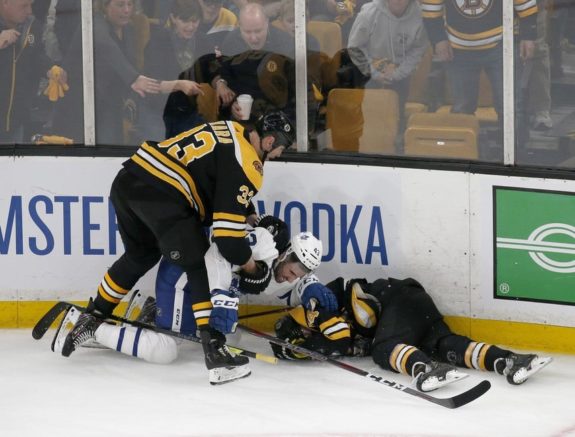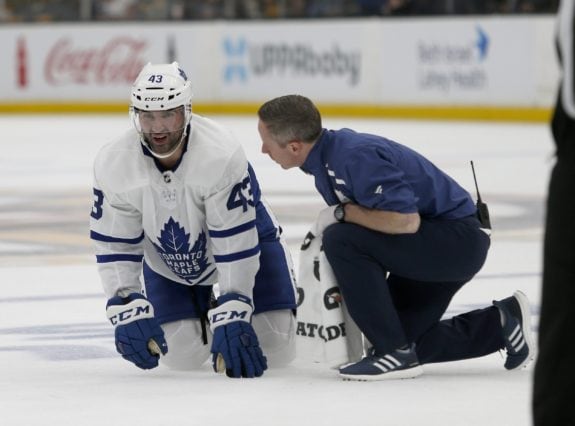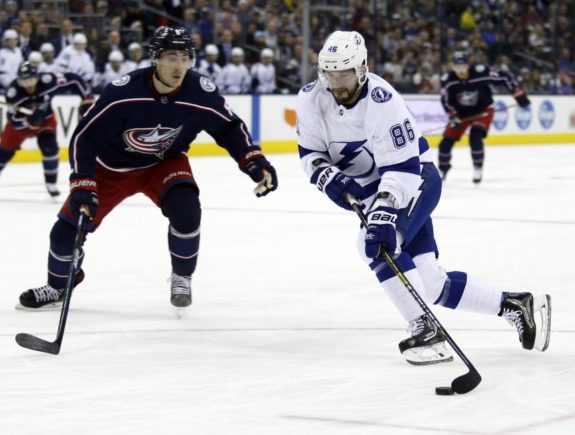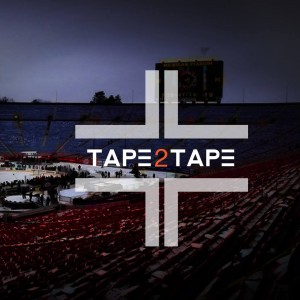Personally, I think it’s been one of the best years in a while when it comes to supplemental discipline handed down from the NHL’s Department of Player Safety (DoPS). For the most part, they’ve been consistent and relatively fair in terms of who they suspend and for how long.
Players like Evgeni Malkin and Connor McDavid even had their names brought before the board as they, too, were culprits in breaking the rules of the game at times this season. But like the NHL’s officiating, thhat seems to change when it comes to playoff time.
Are they fair still? Maybe. But consistency begins to dwindle and there is far too much grey area where suspensions are concerned. This year’s postseason has been no different.
Kadri Gone for Round One
Following a rough and rowdy Game 2 between the Toronto Maple Leafs and Boston Bruins, the NHL’s DoPS made the call to suspend Maple Leafs’ forward and pest Nazem Kadri for the remainder of first round. The choice coming after Kadri, in standing up for teammate Patrick Marleau, threw a blatant cross check to the head of Bruins’ forward Jake DeBrusk.
Related: Kadri Suspended for Remainder of First Round
Kadri was immediately ejected from the game, given a match penalty and a game misconduct. While the hit, both selfish and stupid, deserved a suspension of some kind – especially after Kadri was suspended in last year’s playoff series against Boston for a hit on Tommy Wingels – it doesn’t show any of what led to that particular play and Kadri’s frustration.

History. That’s what led to Kadri’s cross check. A questionable hit in last year’s series – one between DeBrusk and Kadri. Add that to the build up in Game 2 and the lack of officiating up to that point that opened the door for a play like that and you’ve got yourself a storm just waiting to touch down.
Following a questionable call in which the refs gave each player two minutes for roughing, DeBrusk tossed in an elbow on Travis Dermott when Dermott had him pinned up against the boards which caused a facial bleed for the Maple Leafs defenceman. No call. Then there was the knee-on-knee, which Bruce Cassidy said was ‘clean and shoulder to shoulder,’ but let’s take another look at that one Bruce.
DeBrusk followed that up with a hit on one of the more respected players in the league – Patrick Marleau – by directing him into the stanchion next to the Bruins bench, leading to the Kadri cross check.
Now, assuming we go with the unwritten rule that each playoff game equates to two regular season games, Kadri was essentially suspended for a maximum of 10 games. That’s fine. Under the CBA, he is technically a repeat offender. But what about DeBrusk?
Physicality aside because that is part of the game, he certainly played over the line on a number of these plays with no call and no discipline.
However, the NHL’s rulebook defines kneeing as such under Section 6, 50.1, “Kneeing is the act of a player leading with his knee and in some cases extending his leg outwards to make contact with his opponent.”

Now take another look at the video. Considering the history between the two players, discretion should dictate that there should’ve at least been a penalty with the DoPS taking a look at the possible intent behind the play. Still, nothing.
Thornton Gets One
Now, let’s head to San Jose, where the Sharks were forced to play one game without big Jumbo Joe because of a hit to the head on Tomas Nosek. Isn’t the NHL still trying to get head shots out of the game?
In comparison to the Kadri cross check, this may be a little less dangerous based on the fact that Thornton wasn’t using his stick, rather his shoulder, but the NHL’s DoPS saw this as a simple one game ban. That, or the equivalent to a two-regular-season-game ban depending on how you’re looking at it.
Still, it was a hit to the head – exactly what the league is trying to get rid of. But I’m sure one game will do the trick.
Kucherov Suspended One, Too
Similarly, Tampa Bay Lightning forward Nikita Kucherov was forced to sit one game in his team’s series against the Columbus Blue Jackets after slamming defenceman Markus Nutivaara’s head into the boards in Game 2.
The Lightning star sat for Game 3 and upon his return, Tampa Bay was swept out of their first-round series in four straight by the Blue Jackets.

Like Thornton, Kucherov’s hit was a blow to head – a dangerous hit the league is trying so desperately to get rid of. Unlike Kadri, he didn’t use his stick as an extension of his body to further the blow. The result was the same as Thornton – one game. Was it enough? Without being a repeat offender, maybe or maybe not.
Nothing for Foegele?
How about a guy like Warren Foegele on the Carolina Hurricanes? His hit on Washington’s T.J. Oshie wasn’t the same as Thornton’s or Kucherov’s. It wasn’t a hit to the head, but it was dangerous nonetheless.
With Oshie going for the puck along the boards, Foegele laid a crosscheck into the base of Oshie’s back with the Capitals’ forward about three feet from the boards and sent Oshie slamming into the boards face first.
Foegele was given a two-minute minor for boarding and avoided any sort of supplemental discipline. So what was this issue? Was the hit not hard enough? Did the outcome not warrant a second look from the DoPS?
Either way, it should’ve resulted in something far worse than a two-minute minor for the Hurricanes’ forward. That said, he’s not the only player who has avoided supplemental discipline for some reckless play so far in these playoffs. Enter DeBrusk.
What About DeBrusk?
The issue in the Maple Leafs’ series is that the officiating in Game 2 – or lack thereof – was a simple precursor to what ended up happening. The roughing. The elbow. And finally the kneeing incident. All of which came with no calls – no minor, no major, nothing – attached. That’s where the game is lost.
That’s where the violence escalates and people get hurt. Some, like Damian Cox, say that George Parros simply isn’t qualified to make the decisions that are made at the DoPS.
I think it’s just a matter of finding some kind of consistency. If it’s not a penalty in the game, it can still be subject to supplemental discipline if it’s a non-hockey play. And whether you’re a fan of the Bruins or not, the kneeing incident is a simple example of a non-hockey play.
Related: 4 Bold Predictions for the Maple Leafs-Bruins Series
Let them play we say. But we’re all up in arms when someone on our team gets hurt. Maybe it’s time we start to look at how to colour in the grey areas in the rules and search for consistency in how we discipline players.
As for DeBrusk, a comment was made in his post-game scrum in which he mentioned he didn’t really remember the play and how he was a little dazed for the crosscheck. And yet he played in Game 3. Something tells me this might be a subject for another day.

Have thoughts about the column? Let me know on Twitter at @AndrewGForbes or @Tape2TapeTHW.
Tape2Tape is a column looking at some of the biggest stories from around the world of hockey. Discussing different topics, it focuses on delivering some opinion to hockey’s biggest fans. Whether you agree or disagree, we would love to hear your thoughts.